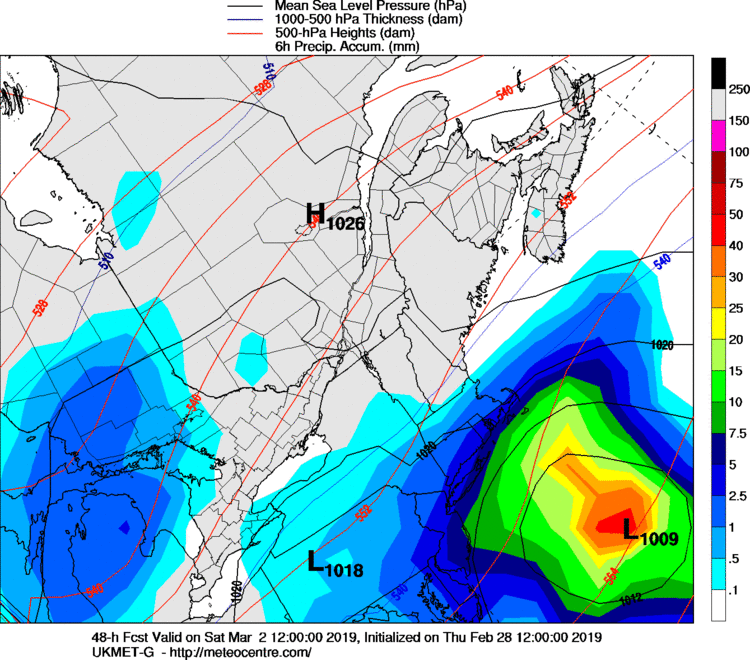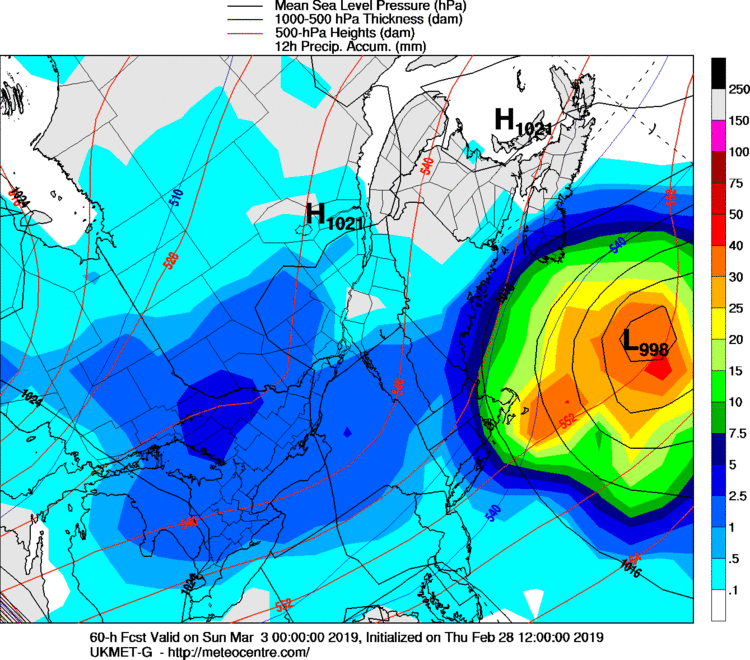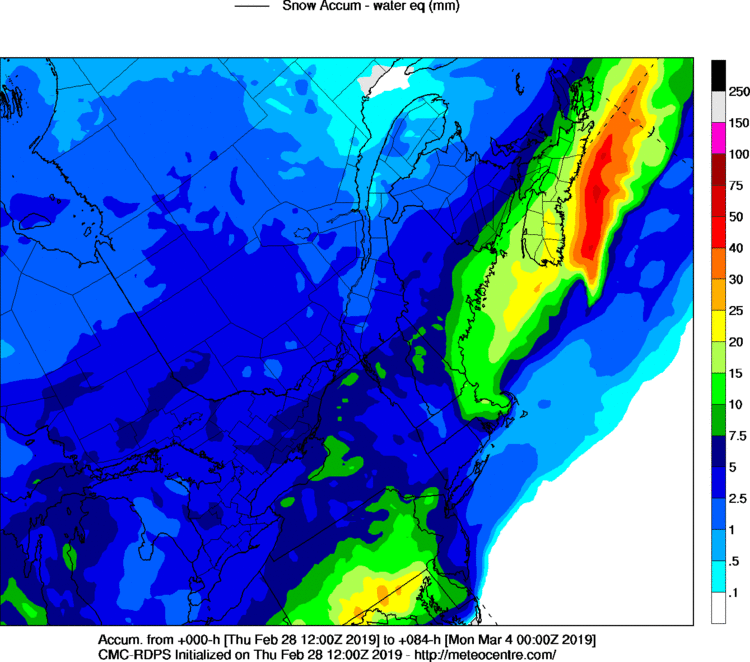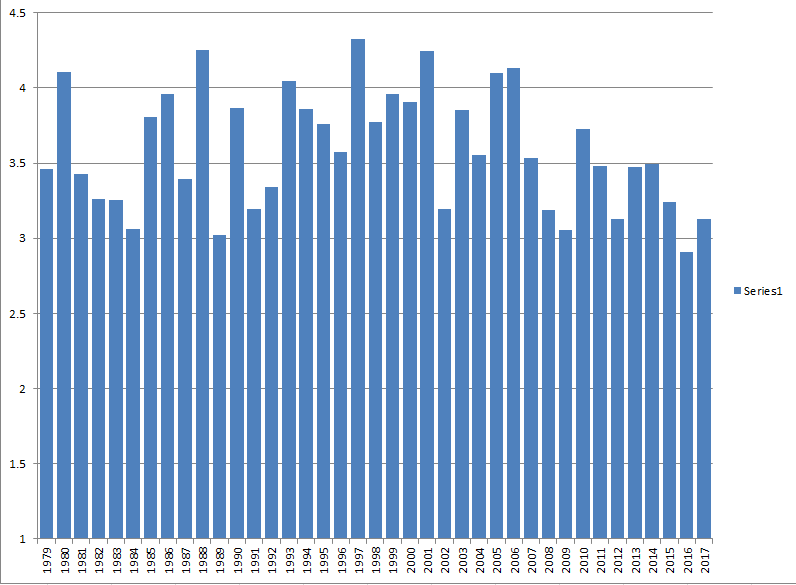-
Posts
90,902 -
Joined
-
Last visited
Content Type
Profiles
Blogs
Forums
American Weather
Media Demo
Store
Gallery
Everything posted by ORH_wxman
-

Perhaps a Coastal Storm on March 2nd for SNE????
ORH_wxman replied to USCAPEWEATHERAF's topic in New England
She's coming NW on the Euro through 36 hours. -

Perhaps a Coastal Storm on March 2nd for SNE????
ORH_wxman replied to USCAPEWEATHERAF's topic in New England
Euro was the first to toss the idea of a cutter for this storm...GFS was still cutting this thing even a couple days ago. -

Perhaps a Coastal Storm on March 2nd for SNE????
ORH_wxman replied to USCAPEWEATHERAF's topic in New England
Def a big improvement over 00z, but not as good as the GFS solution. If the Euro can make a pretty notable jump toward this today, I think we're in business...I wouldn't expect Dr. No to come all the way in one run...but a non-microscopic jump will be telling. I'm guessing it will...the 06z run actually looked decent aloft, but it wasn't really drawing that sfc reflection in toward it as well as the other models we've seen. -

Perhaps a Coastal Storm on March 2nd for SNE????
ORH_wxman replied to USCAPEWEATHERAF's topic in New England
-

Perhaps a Coastal Storm on March 2nd for SNE????
ORH_wxman replied to USCAPEWEATHERAF's topic in New England
GFS has a nice commahead look to it...would probably even be a little better on the northwest side than the qpf maps think. -

Perhaps a Coastal Storm on March 2nd for SNE????
ORH_wxman replied to USCAPEWEATHERAF's topic in New England
-
I remember someone had written an overview of the 2013 Arctic melt season and I can't find it now...but either way it showed how much the loss of multiyear ice had changed the Arctic. The 2013 summer was the coldest in the Arctic basin since 1996...but yet we still had a min around 5 million sq km, which was lower than any min pre-2007...despite some really warm years like 2005 or 2002.
-
Yeah the interactive graph uses the 5 day mean....it's updated daily, so its a daily reading, but the data is a 5 day average. The single day reading is actually 4.56 million sq km today. Like I said before, I can't remember if they use that or the 1 day reading as the min...but looking back at past mins, I think they use the 5-day reading that's on the graph. I seem to remember them explaining that the single day jumps can be a bit volatile and produce faux numbers on the margins, so they prefer to smooth it out. JAXA actually does this too but they do it over a 2 day average. We'll know soon enough. Not that there is a big difference...
-
Bluewave, I think you are referencing the 5 day average....the daily on NSIDC did get as low as 4.55 million sq km. I'm actually not 100% sure what NSIDC uses...I think they might actually use the 5 day average as the min if I recall correctly, so your number might be more "official".
-
Time to bump this as it looks like the NSIDC area minimum has been reached. The min area likely occurred 2 days ago at 3.17 million sq km. This ranks 9th lowest. My prediction above was for 3.3 million sq km +/- 200k...so this falls within that range. Taking the post-2007 average of area losses continues to be a better predictor than all previous years. The 3.17 million result was the 38th percentile of all the potential outcomes using only post-2007 area loss. This was around one half of a standard deviation, so not a strange result. The other typically less accurate prediction is extent. My NSIDC daily extent minimum prediction was 4.75 million sq km +/- 300k (and Jaxa would have been around 4.55 million sqkm). I'm not completely sure if the NSIDC extent min has occurred yet, but if it hasn't, the difference should be trivial from here on out. 2 days ago, the NSIDC extent bottomed out (for the time being at least) at 4.55 million sq km. It is still only 4.56 million sq km, so it's possible it falls back below 4.55 million sq km...though it is unlikely it will fall much below that if it does. The extent prediction was actually good this time as it falls within the margin set. In a strange nuance this year, jaxa extent is pretty close to NSIDC...usually it is close to 200k lower, but not this year. Jaxa min so far is 4.51 million sq km, so only 40k below NSIDC so far. So as a result, my jaxa prediction is really close to perfect. Again, these both could fall slightly more, but it's doubtful it would be more than trivial amounts. The current extent min on jaxa ranks 8th lowest, and the min on NSIDC ranks 6th lowest. 2017 and 2008 were both a little bit higher than 2018 on NSIDC extent.
-
Jaxa had a gain of 38k yesterday....so it's possible we have hit the extent minimum. If we have, then the jaxa min was 4.54 million sq km. This would rank 8th lowest above 2017, 2016, 2015, 2012, 2011, 2008, and 2007. Area loss is still crawling along (around 5k loss today)....area is currently at 3.2 million sq km. It is probably very close to the minimum but I will wait until it is reached to reconcile my predictions from the end of June data. If area loss doesn't change much more, then this would rank 9th lowest (same list as above, but area is higher than 2010 unlike extent).
-
Still falling for both area and extent but it's been very slow recently. We're around 3.4 million sq km on area and about 4.74 million sq km on jaxa for extent (prob about 200k higher than that on NSIDC). We are likely looking at a final extent somewhere in the 4.4-4.5 million range for jaxa (4.5-4.7 for NSIDC) and an area minimum of 3.1-3.3 million is my guess at this point. But there is still some time for a few minor surprises. The final outcome of this season though looks like it is going to be in line with what we thought in late June once it became apparent that melt ponding was not strong early in the season. I'll bump my predictions based on the melt ponding/area numbers once the minimums actually occur and compare the results.
-
Jaxa extent is currently 7th lowest but the ice pack is pretty compact which is leading to area being only 9th lowest. I borrowed the area graph from Neven's Arctic sea ice forum for a better visual.
-
We have a very compact ice pack right now. The area numbers are on the higher side at the moment while extent is running lower. I expect this will produce a decent slowdown in extent loss fairly soon. Here's how other years compare to 2018's area right now: 2017: -187k 2016: -528k 2015: -354k 2014: +358k 2013: +314k 2012: -927k 2011: -490k 2010: -67k 2009: +238k 2008: +11k 2007: -612k You can see the in the post-2007 context, the only years noticeably ahead of 2018's area are the lower melt years of 2009, 2013, and 2014. Extent is already low though, so it is likely we will finish at least in the bottom 6 or 7 in extent...it remains to be seen if we can crack the top 5 at the end. I think it will be hard to go lower than 2012, 2016, 2015, 2011, and 2007....but it's possible if we keep the ice pack really compact like we did in 2015.
-
The winter of 2007-2008 was a big deal too...not just the 2007 melt season. At the end of 2007, the arctic still had a lot of MYI leftover, but a huge portion of it got exported in the winter. If it had been recycled back into the Beaufort gyre, then it's possible we would have reverted a little more to years like 2005. Still low, but not wiping out the pacific side almost every year. It would have eventually been wiped out with some of those years like 2011 and 2012, but who knows how the progression would have looked with more MYI...the temp profiles may have been different. Hard to say for sure. The first year ice doesn't get thick enough now in the Chukchi to protect the beaufort gyre from warmer waters. We started to see a recovery in the gyre with the very cold 2013 and 2014 seasons combined with decent winter patterns of lower export, but then 2015 had an epic July dipole that wiped out the MYI over there. I think the only way we'd get back to anything that looks like a pre-2007 year would be to have an anomalously cold winter up there combined with a cold melt season....but that type of sustained cold is nearly impossible to come by in the arctic...we only seem to be able to get it maybe 1-2 months at a time. Of course, a big volcanic eruption may do the trick too...the arctic tends to cool more rapidly than anywhere else from aerosols.
-
I wouldn't take the DMI volume data too seriously. PIOMAS has a better track record and more data. PIOMAS in mid-July had us neck and neck with 2013/2010/2016...above 2012, 2011, and 2017 and well below 2014. 2016 got destroyed from here on out so I won't be surprised if we are above that year by now since the last PIOMAS update....but I'm pretty sure we won't finish near 2014.
-
I still think the ice there has weakened quite a bit though...there's still some yellows mixed in there. But that area will def be crucial to how low 2018 goes. There isn't going to be much melt in the solid purple areas of the CAB since that region has seen very little melt ponding so it's going to come down to the "ESS arm". The central CAB was actually getting snow fairly recently....unlike 2015 where it was getting crushed by an epic high pressure all July. This is why I think it will be tough to get into a top 5 extent year.
-
Wow. A friv post...must mean something exciting is happening in melt season. All joking aside, I still appreciate the friv analysis...he even gets sh*t at neven's forum for not being alarmist enough. But i I agree with friv here...this is pretty impressive in the ESS. It's going to melt down far...more than what we thought possible even a few days ago. This is probably a combo of weak ice growth there and some intense warmth that happened early in July which wiped out the snow cover on the ice. The snow cover on the ice is an underrated aspect...esp in FYI. We may challenge a top 5 here...I think top 3 is still out of reach but a top 5 is possible. Esp in area. I think a top 3 in extent will be hard. 2015 compacted a lot and we would need to see big compaction again. Esp since the CAA is still pretty icy compared to the low years.
-
I wouldn't take the thickness map from dmi seriously...that area melts out almost every year. You could probably thicken it with some compression if everything was perfect but I'm quite skeptical it's real in an area that big.
-
Paltry area losses continue...now we trail only 2009 in the post-2007 years. But we're still really close to 2013/2014. The ensembles are trying to show a change in the pattern finally as we head into August....we'll see if that happens. We've had some years where an august pattern change mattered a lot....2014 was one of them. That year was destined to be the least ice melt since 2006 before a big shift to a dipole pattern for a couple weeks in August really hammered the ESS arm of ice....and it finished just under 2013 instead. Still a lowish melt year in the post-2007 context, but it could have been even less. The ice this year is thinner than 2014, so a pattern change could matter more this season. As usual though, I'd like to see this get solidly inside of 7 days before really buying a big shift. We've seen some of these shifts in recent years get muted or they are just very transient and it flips back to the negative dipole quickly.
-
NSIDC area has indeed stalled the last couple days...we'll see how long that goes. But we're back to being basically a dead heat with 2013/2014.
-
I'm not sure if there's any connection to the persistent low pressure up in the arctic the last month or so and the SSW late in the cold season. If the AMO actually does plunge into negative territory on a multi-year scale, then we'd probably see less warm intrusion from the Atlantic. The negative phase of AMO has previously been linked to colder arctic temperatures, but it remains to be seen how much this would actually offset the underlying warming trend. There was some literature not too far back that had shown the recent arctic warming was amplified by 30-50% since the early 1990s due to the AMO shift. But with the loss of a lot of multi-year ice and the underlying warming trend, it's hard to say just how much affect a negative AMO would have.
-
No, 2009, 2013, and 2014 have fallen behind the melt pace of 2018...we're pretty close to 2017 right now actually. I am expecting though that we will stall pretty good since we've now almost melted out the Kara/Hudson and the pattern in the CAB is pretty good for the ice for the foreseeable future. We're way behind years like 2007 and 2012 or 2016 so there's basically zero chance to have something like a top 3 finish. I don't have the exact numbers in front of me at the moment, but I'll post them as soon as I have a chance. Based on where things stand right now, I'm expecting a result a little lower than a 2013/2014 but higher than last year. We'll see if that changes.
-
There's a decent amount of really low concentration ice in the Hudson and Kara right now so I expect extent loss numbers to still remain strong over the next week, but the area numbers should stall pretty good with the big reverse dipole. I'd expect then we eventually see an extent stall once Kara/Hudson melt out.
-
The Greenland stuff is interesting but the MB has a high error bar because they use GRACE data and there's a lot of debate on what the isostatic adjustments should be. There's some big back and forth in the literature right now about these...mostly centered on Antarctica but it does pertain to Greenland too. We know Greenland has been losing mass the past decade-plus but we just aren't quite sure on the magnitude.






